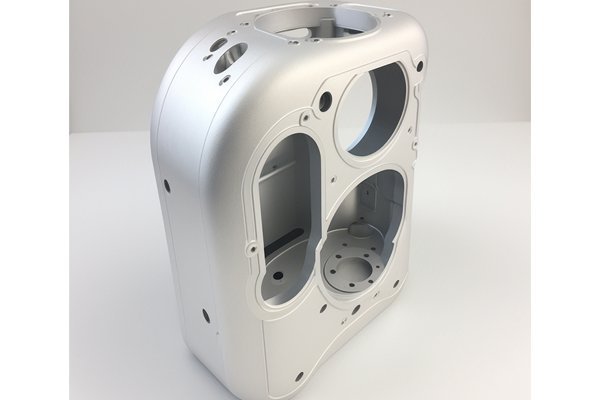Opening: The Changing Landscape of Machining Costs
Did you know that the global CNC machining market is projected to reach over $117 billion by 2027, growing at a compound annual growth rate (CAGR) of 7.6%? This staggering growth reflects not only an increased demand for precision and efficiency but also evolving trends in technology and materials that significantly affect machining costs. In an industry defined by rapid technological advancements, understanding the future trends and their implications for machining costs becomes crucial for businesses aiming to remain competitive.
The Evolution of CNC Machining Costs
CNC (Computer Numerical Control) machining has revolutionized manufacturing, providing precision and efficiency previously unattainable with manual processes. However, machining costs have always been a complex interplay of materials, labor, technology, and market dynamics. As new materials and innovative technologies emerge, they reshape the landscape of what machining costs entail.
One of the most significant factors influencing machining costs is material innovation. As advanced materials like composites, super alloys, and specialized plastics gain popularity, manufacturers face both opportunities and challenges. New materials can result in increased performance and durability but may also require specialized machinery and tools, leading to a rise in upfront costs.
The integration of automation and smart technologies into CNC machining processes has been one of the most influential trends impacting costs. Industry 4.0 employs IoT (Internet of Things), AI (Artificial Intelligence), and big data analytics to optimize production. This facilitates predictive maintenance, reduces downtime, and enhances production efficiency, often resulting in lower overall costs.
The dynamics of the global supply chain have also been shifting, especially in the wake of recent events that have disrupted traditional models. Manufacturers are increasingly exploring localized production to mitigate risks and reduce expenses. This shift can impact machining costs significantly, depending on labor rates and material availability in different regions.
As the manufacturing industry increasingly faces pressure to adopt sustainable practices, embracing eco-friendly materials and lower-energy processes is becoming a priority. While these initiatives align with environmental goals, there can be initial cost increases associated with transitioning to greener alternatives. However, in the long term, improvements in energy efficiency and waste reduction can lead to substantial cost savings.
The demand for customization and short-run production is on the rise, driven by consumer preferences for unique products. This shift requires advanced machining techniques capable of accommodating small batches effectively. While here are higher costs associated with setting up specialized processes, the ability to charge premium prices for custom work can offset these expenses.

Technical Solutions for Optimizing Machining Costs
The key to navigating the ever-evolving landscape of CNC machining costs lies in investing in smart technology. Adopting advanced software solutions can facilitate better scheduling, inventory management, and resource allocation, thereby reducing wastage and downtime. This tech-forward approach ensures your operation can adapt quickly to changes in material costs or shifts in demand.
Select materials carefully, balancing cost with performance requirements. While advanced materials may carry a higher price tag, they can yield savings by reducing machining time or enhancing product longevity. Furthermore, choosing the right tooling can drastically improve machining efficiency. Investing in high-quality tools designed for specific applications can minimize wear and maintenance, thereby protecting your bottom line.
Optimize your workflow by adopting Lean manufacturing principles. Identify and eliminate process bottlenecks that contribute to inefficiencies. This approach can greatly reduce cycle times, leading to lower labor costs and improved output.
Invest in workforce development. A skilled labor pool is vital for maximizing the benefits of advanced CNC machinery. Continually training your workforce ensures they are adept at utilizing new technologies and understanding complex production processes, ultimately impacting both quality and cost.
Implement continuous improvement strategies, such as Six Sigma or Kaizen, to refine processes consistently. Regularly assessing performance metrics allows businesses to identify areas for improvement and address potential issues before they evolve into costly problems.
Ending: Navigating the Future of CNC Machining Costs
In conclusion, the future of machinings costs is influenced by a multitude of factors ranging from material innovation to the incorporation of automation and sustainable practices. As we look to the future, manufacturers must remain adaptable, embracing technological advancements and seeking out solutions to optimize operations. By investing in smart technology, refining material selection, streamlining workflows, training skilled labor, and maintaining a focus on continuous improvement, businesses can not only mitigate rising costs but also position themselves as leaders in the competitive landscape of CNC machining.
This blog serves as a crucial reminder of the importance of understanding the multifaceted dynamics of machining costs. As the industry evolves, staying informed about these trends and their implications can help stakeholders make wise decisions and foster growth in an ever-changing market. Understanding the cost structure today will ensure that businesses are not just participants in the future of manufacturing but leaders driving the change.






